Do you remember when Google released AdWords? It was like the gold rush because companies were making millions of dollars from those ads.
If you fast-forward to today, AdWords is still a great marketing channel, but it is more expensive due to its saturated marketplace. You won’t make as much profit from it now as you could in the past because all marketers know about it.
The same thing is happening with Facebook ads. It’s still a great channel, but it was much easier to make money from when Facebook ads were brand new.
This situation doesn’t just apply to paid channels either. There weren’t as many SEOs 14 years ago as there are now, which made it easier to rank high. Google eventually caught on and updated its algorithm to combat SEOs.
No matter how good of a marketer you are, it’s never easy to scale marketing efforts. Why? Because every good channel becomes used, and eventually abused, by marketers.
So, what are you supposed to do?
All you can do is continually find and test new marketing channels. Sure, some channels will work better than others, but as you continually expand, you’ll see good growth.
Here is how to find and test new marketing channels:
Experimentation
Do you remember how fun it was to try new things as a kid? Experimenting with your marketing efforts is just as fun!
What is marketing experimentation? It’s all about trying and testing new channels. You’ll never grow your marketing if you don’t constantly test new channels, whether they are paid, organic or partnership-based.
How can you find these channels?
The simplest way to do it is to spy on your competitors. From Spyfu to SEMrush to What Runs Where, the possibilities are endless. All of those tools will show you what your competitors are up to.

In addition to using the tools above, you should continually be monitoring what your competitors are doing. A simple way to do this is to enter your competitor’s URL through the Quick Sprout Analyzer to see the breakdown of what they are doing from an organic and social media perspectives. You can even compare how you stack up against your competition. This analysis will give you a good idea of what you should be focusing on.
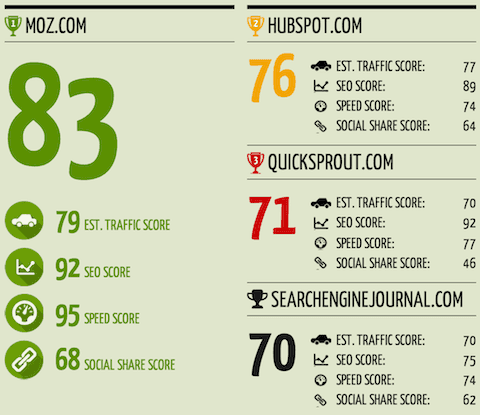
Lastly, a simple way to continually learn about new marketing channels is to read the following blogs:
- Search Engine Land – this blog covers all the news and trends of search engine related marketing.
- Martech – this blog covers the news and trends of the marketing industry.
- Moz – you’ll learn about new strategies and tactics from this blog.
- Quick Sprout – I tend to cover tactics as well.
When launching experiments, you should focus on speed. When it comes to money, ideally you don’t want to spend much. We typically try not to spend more than $500 per experiment. If your business has a lot of cash on hand, you can spend up to a few thousand dollars per experiment.
Growth
Experiments don’t always work out, which is why they are called “experiments.” A few of the marketing channels you test out will be instantly profitable, and the majority will be losing you money.
Out of the ones that will be losing you money, some will only be losing a small amount of cash because they would still drive a few paid customers, and some will be losing you a lot of money as they would bring no new customers.
The ones that don’t drive you any new customers can be cut off unless you feel that the channel is a viable strategy in the long run.
The growth strategy we use for paid channels is:
- Increase the spend for profitable channels until they break even.
- Grow the channels that are losing a bit of money, but make sure you aren’t losing any more from a percentage standpoint. You typically don’t want to be in the red more than 5 or 10%.
As for organic channels, keep doubling down and don’t worry about ROI for at least 6 months. If you can’t do this, then come back to organic channels at some point in the future. Getting a ROI in a short period of time rarely works out.
Don’t put too much emphasis on learning each marketing channel. Your overall goal from a growth perspective is only to increase volume.
Optimize
Now that you are getting a lot of traffic and sales from these new marketing channels, it’s time to optimize. Your goal is to keep the number of sales the same, while cutting the dead weight.
The way you would do this is by learning how to leverage each channel.
Tweak and Maintain
As we mentioned at the beginning of this blog post, all good marketing channels become saturated…it’s just a question of “when.”
To keep up, you have to continually tweak and maintain your campaigns. With paid advertising, costs will naturally go up over time, so you will have to remove keywords that aren’t profitable. Because people tend to have banner blindness, you will have to keep changing up your ad copy and images on a regular basis.
As for organic campaigns, you’ll find that they become more cost effective as time goes on. But the moment you let your foot off the gas pedal is the moment your traffic will start declining. So, you will have to continually think outside the box and come up with techniques people haven’t used before.
The biggest mistake you can make is to leave your marketing campaigns on autopilot. You have to adjust them on an ongoing basis since marketing changes over time.
The reason a lot of companies stall in growth is because they aren’t continually finding and testing new marketing channels. If you dedicate at least 10 hours a week to growing your marketing campaigns, you will see your revenue and profit growing month after month.
Why I Choose to Focus on One Marketing Channel at a Time
We feel like there’s an overarching maximalist mindset in marketing these days.
And it’s easy to see why.
Brands have never had more strategies to choose from.
There’s content marketing, social media, SEO, email, PPC, and influencer marketing, just to name a few.
But that’s just the tip of the iceberg, and this doesn’t even take into account more traditional offline techniques that many companies still utilize.
In turn, we think many brands are suffering from exhaustion and fatigue.
They’re experiencing marketing overload.
We also think marketers don’t always extract the full potential from their strategies.
Before they can see one channel through to completion, they’ve already started working on three more channels.
If we’ve learned anything during our years as a marketer, it’s that simplicity is usually the key to success.
Because of that, we choose to focus on only one marketing channel at a time.
Here’s why.
We don’t spread ourselves too thin
You know that old saying that if you try to please everyone, you end up pleasing no one?
We think this applies to marketing as well.
Jumping in head first and attempting to manage, say, four or five different channels can be overwhelming, and you’re unlikely to kill it at any strategy.
Even if you’re a savvy marketer who knows the ins and outs of the process, you simply can’t devote the necessary time to extract the full potential of any single channel.
Just look at the amount of time most marketers spend each week performing routine tasks:
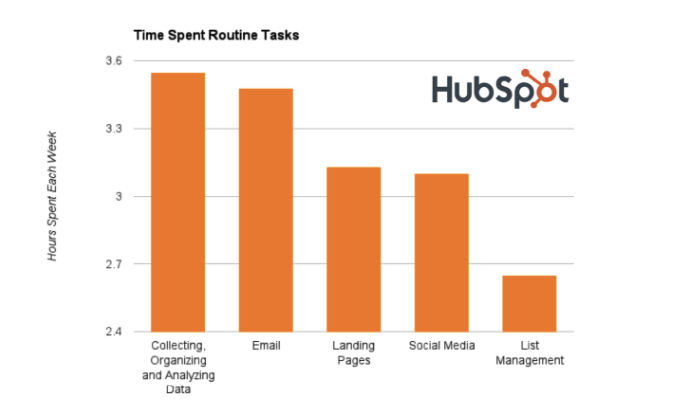
But when you concentrate wholeheartedly on one channel, you can give it a 100% effort.
This helps you not only run your marketing campaign at a high level but also achieve the desired results faster.
Working on too many marketing channels at once is kind of like being a jack of all trades and master of none.
Placing your attention on a single channel allows you to master that channel before moving on to the next strategy.
Managing multiple channels can quickly become chaotic and stressful
Did you know that the average B2B content marketer creates 13 types of content?
You heard it right—13!
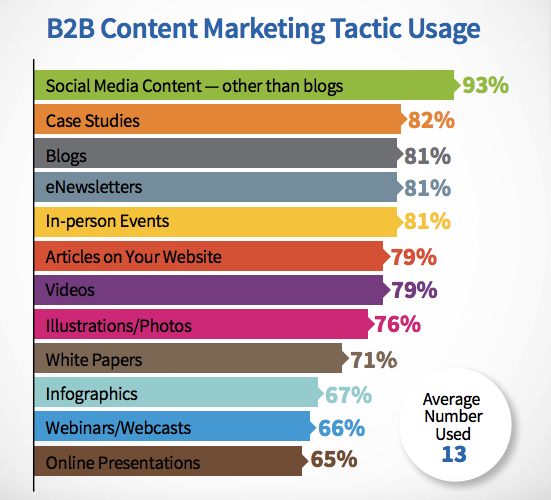
That, in and of itself, is a lot of work.
And just imagine combining that with multiple other channels at the same time.
Things would get hectic in a hurry.
Social media can be pretty intense as well. The average B2B content marketer is active on six different networks:
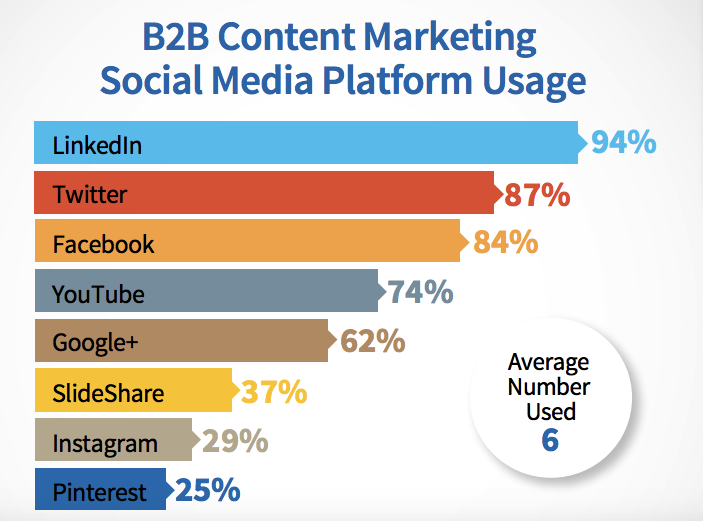
Even if you’re posting the same content on each network, it’s still going to be time-consuming.
We can almost guarantee you’ll feel burned out and the overall effectiveness of each channel will be marginal.
And this is going to be even worse if you’re new to marketing and/or have a small marketing team.
Or what if you’ve got a mountain of other business-related tasks on your plate?
There are just not enough hours in the day to devote to your marketing to ensure everything is operating at full capacity.
As a result, certain areas of your marketing campaign are bound to suffer.
Focusing on one marketing channel allows us to continually chip away at it and be highly effective.
We’re far less likely to become overwhelmed, and we can ensure that the specific channel we’re working on is reaching our target audience, generating leads, and leading to conversions.
In other words, it allows us to maximize our ROI without losing our minds along the way.
We ensure we get it right
Would you rather be a virtuoso at playing one musical instrument or a sub-par musician playing four or five?
We would prefer to be an expert at a single instrument.
We apply the same approach to marketing.
We would much rather devote the majority of our time to a single channel and completely crush it instead of working on a handful of channels and being painfully mediocre.
After all, what’s the point of spending any time whatsoever on a tactic if it’s not giving you any tangible results?
To us, it makes way more sense to give maximum effort to a single channel and make it incredibly successful rather than working on multiple channels half-heartedly.
Multitasking minimizes our impact
Working on multiple marketing channels simultaneously is a lot like multitasking because you’re constantly bouncing from one technique to another.
But numerous studies have found that multitasking isn’t as good as it may seem.
In fact, it can be quite detrimental to your efficiency and overall productivity.
A study from the University of London even “revealed that subjects who multitasked while performing brain-intensive tasks demonstrated IQ drops similar to people who are sleep-deprived or smoked marijuana.”
If you’re looking for a scientific explanation of this phenomenon, neuroscientist Daniel J. Levitin offers one.
According to him,
Multitasking has been found to increase the production of the stress hormone cortisol as well as the fight-or-flight hormone adrenaline, which can overstimulate your brain and cause mental fog or scrambled thinking.
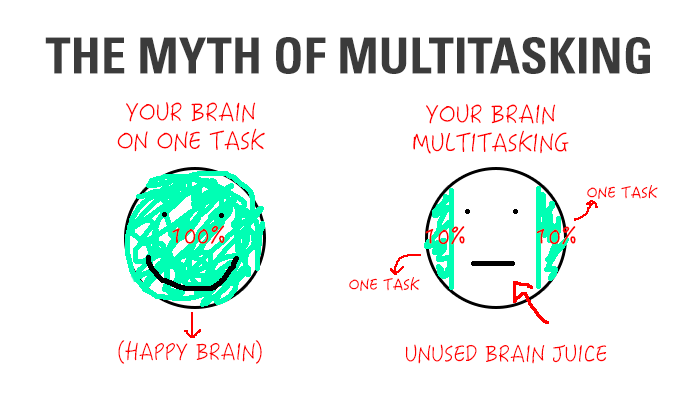
The founder and chief technology officer of Wordstream, Larry Kim, even stated in an article for Observer that…
…you’re actually hurting your brain by juggling several undertakings at once.
The bottom line is that trying to focus on too many marketing channels at the same time is usually counterproductive and is only going to reduce the impact of your overall campaign.
But focusing on just one at a time allows you to be as effective and efficient as possible.
It costs less
There’s also the topic of money.
It’s been found that 89% of marketers are maintaining or increasing their inbound budgets.
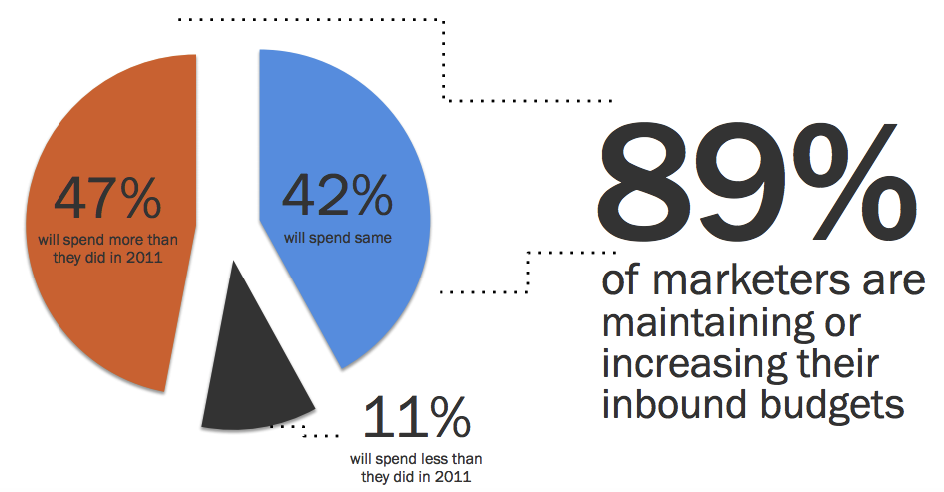
Implementing only one marketing channel at a time will cost you considerably less than pursuing a multi-channel approach.
According to an article on LinkedIn,
…it has even been estimated that a single-channel marketing strategy can cost as much as one-third less than multiple-channel strategies.
If you’re dealing with a fairly small budget, utilizing several techniques may simply not be in the cards for you from a financial standpoint.
Things can get especially ugly if more than one of those techniques tank, and it’s obviously going to hurt your ROI.
When we were starting out, the financial resources were often scarce.
Focusing on one marketing channel at a time enabled me to maximize the money we funneled into our campaign.
It allows us to outperform our competitors
When it’s all said and done, the absolute most important part of any marketing campaign is its ability to target the right demographic.
And let’s be honest. Using a smorgasbord of techniques typically means that each individual technique is less likely to hit its target.
When we divvy up our time across multiple channels, we minimize the effectiveness of any single one.
For this reason, it makes it really difficult to truly stand out from the competition and thrive within our industry.
We’re not really doing anything special or excelling at any particular strategy.
But concentrating on only one channel puts us in a position for success.
Because we eat, sleep, and breathe that one channel for a period of time, it’s more likely to flourish and grow.
In some cases, we can even dominate.
That’s because most of the competition has a maximalist mindset, trying to have their hand in everything rather than focusing on—and succeeding—in one area.
A final note on picking one marketing channel
Just to be clear, we’re not saying you should limit yourself to just one marketing channel.
That’s not what we’re saying at all.
In fact, we would never recommend putting all your eggs in one basket.
What we are saying is that you’re likely to reduce your marketing impact if you go overboard and spread yourself too thin—especially during the initial stages of a campaign.
For us, it makes way more sense to focus on a single channel, bring it to full capacity, and maximize its impact.
Once it’s established and stabilized, you can move on to the next channel.
In other words, simplify your efforts by working on one channel, and get it running like a well-oiled machine before moving on.
Over time, this approach should help you develop a strong marketing campaign, with no weak links but with techniques that carry their weight.
6 Marketing Channels (and which ones to pick)
Depending on whom you ask, you’ll get different answers to the question of how many marketing channels there really are.
The number gets even more complicated if you consider that there are many offline marketing channels as well.
However, for most of us, the number of channels doesn’t matter.
What does matter is that there is a handful of core channels that are by far the most effective digital marketing channels.
That’s what this post is all about.
We’ll go over the six main digital marketing channels you should at least be familiar with. On top of that, we’re going to show you how to evaluate each channel to determine whether it’s worth your time.
The real power of studying channels: If you want to learn this stuff because you love marketing, that’s great. But there’s also a great practical reason for you to want to learn it.
Once you learn how to identify the best marketing channels for your business, you can study them and create content for those specific channels (and sites in them).
By targeting content towards a specific audience, you’re much more likely to create something they’ll love and want to read.
Channel #1: Search engines (SEO) is the best place to start
There are very few websites that wouldn’t benefit from search engine traffic.
No matter what industry you’re in, some of your target customers are using search engines to search for something.
That doesn’t mean you should necessarily spend all your time on SEO. It’s not always the best channel, but it’s one that you must research.
What you should be looking to do at this point is just some basic keyword research. Afterwards, you can do some more advanced keyword research with these resources:
- 5 Modern Keyword Research Methods to Uncover Hidden Gems
- How to Use the Google Keyword Planner Tool for SEO
<here, we=”” just=”” want=”” to=”” see=”” the=”” general=”” number of=”” searches=”” your=”” target=”” audience=”” does=”” every=”” month.=”” for=”” that,=”” <a=”” href=”https://ads.google.com/home/tools/keyword-planner/” rel=”noopener noreferrer”>Google Keyword Planner will work just fine.</here,>
Start by entering some broad niche keywords. For example, “content marketing” or “social media marketing” if you were starting a blog like Quick Sprout.

Look through the list that comes up, and see how many keywords have a significant search volume (at least a few hundred per month).
While you’re missing out on a lot of keywords using this simplistic method, you want to see at least 50 keywords worth targeting.
If you don’t know where to start when it comes to searching for keywords, find a close competitor in your niche.
Then, enter their URL in the website field of the keyword planner instead of typing in keywords.
If they have a WordPress blog, you can typically add “/feed” to the end of their blog URL to get a more complete set of keywords.
For example, instead of entering:
enter:
That will give you a set of really broad keywords, and you can enter any of those into the tool to get a list to analyze.

Channel #2: If you want customers fast, PPC (pay-per-click advertising) is the way
When you identify a marketing channel, you first want to make sure you can actually reach your readers through it.
After, you need to decide if it’s ideal for your business. All channels have their strengths and weaknesses.
SEO, for example, can provide you with steady, high-quality free traffic. The downside is that it is hard to earn that traffic, can take a long time to get, and requires an upfront investment.
PPC, on the other hand, allows you to drive the same type of traffic (if you’re using AdWords) from day one of publishing content. There are also many more platforms you can use other than search such as Facebook advertising or LinkedIn advertising.
The downside is that it’s expensive, and if you don’t have a solid conversion funnel in place, you’ll end up wasting that traffic and losing money.
When can you use paid advertising? Another benefit of PPC is that you can use it for virtually any niche.
If there’s search traffic, you can advertise on Google or Bing.
If it’s most popular on social media, you can advertise there.
If you have a significant content promotion budget (on an ongoing basis), PPC is an option at your disposal.
However, if you don’t already have a solid sales funnel, be prepared to lose money.

Your time should mostly be spent optimizing ads and conversion rates of your content (readers into email subscribers). From there, you’ll need to determine the best way to sell to those subscribers.
Channel #3: You don’t always have to compete with other blogs
If you’re starting a blog, we sure hope there are at least a few other, remotely similar to yours, popular blogs that already exist.
If not, there probably aren’t many potential customers reading blogs in that niche, and you’re wasting your time. The one exception is if you’re writing about a very new topic that has just started growing.
These blogs are usually seen as competition, but they don’t have to be.
A reader is not an all-or-nothing asset. A reader can follow multiple blogs.
If you give blog owners an incentive, you may be able to get them to allow you to get your message in front of their readers.
How?
The main ways are:
- Guest-posting – We guest-post on a regular basis and have written multiple guides to using it effectively. Here, the incentive is free content for the site owner. Of course, you need to make sure that your content is good enough to be worth it. Not all blogs allow guest posts, but many do.
- Joint content – For all our advanced guides (in the sidebar), we’ve gotten help from respected bloggers in each niche. They get publicity, and we get help with our content.

- Sponsored posts – You can contact a blogger and offer to sponsor a post. These typically involve a few mentions naturally throughout a post.
- Joint ventures – You can even get involved with a product a blogger sells and help improve it. Their customers will see you in a very good light, and many will follow you because of it.
For now, you want to find as many of those blogs as you can.
It’s pretty easy these days. Start by Googling a phrase like “top (niche) blogs.”

You’ll probably find at least a few results, featuring long lists of blogs in your niche.
Write these down somewhere.
You can also head to Alltop, find your niche in the menu bar, and then write down the blogs that come up:

Traffic is king: There’s no point in doing a guest post on a site with very little traffic. Even if your post is great, you’ll only get a few readers from it.
Your next step is to estimate the traffic levels of each site you wrote down.< Visit each site, and look for:
- Average number of comments on each post
- Average number of social shares
- How well designed the site is
- Whether the number of subscribers is listed anywhere
It’s hard to know if a site has a lot of traffic, but if it’s getting 5+ comments or 100+ social shares on each post, it has enough to consider partnering with.
Filter out all the low traffic sites. If you still have 20+ sites left to potentially work with, then these blogs are another channel you can target.
Channel #4: Can you be social?
Social media sites are usually hit or miss.
Some niches, like fitness, food, fashion, and even marketing to a degree, are highly shareable.
In order to use social media effectively, you need those extra followers and readers you get from “likes” and “shares.”
That’s why you don’t see a lot of asphalt companies or paper companies killing it on social media. It’s really hard to create shareable content in those niches.
To see whether it’s viable for your niche, you can use Buzzsumo, a tool we’ve mentioned many times before. Not only will it show you if your niche is popular on social media, but it will also tell you which social media sites to focus on.
Type your niche into the top content tool. If the results seem irrelevant, add quotation marks around your keyword:

In addition to the core keywords, we recommend typing in a few related keywords for more data.
You’re looking for two things here:
- Is content in our niche shareable? – If there are several pieces of content with over 1,000 shares, it’s safe to say that your niche is viable on social media.
- Which network(s) is most popular? – You’ll likely see that one or two networks make up 90% of the shares. In the case above, Twitter is the dominant source, followed way behind by Facebook and LinkedIn in most cases.
While there may be a few fluctuations, you’ll see that there is a pattern when it comes to the most popular social networks. You’ll want to focus on the most popular ones if you choose to use social media.
Channel #5: Forums are the backbone of the Internet
Forums have been around since the start of the Internet and continue to play a big part in most users’ online lives.
While getting readers from forums doesn’t scale very well, it can be very effective when your blog is new and you need that initial audience to write for.
On top of that, it’s free—other than your time investment.
Here, you need to find out whether there are any popular forums. To do so, Google for “(niche) + forum.”
You need a minimum of one highly active forum. You want to see 100+ users a day making new posts.
Check out the first few results, and see if any meet that criterion.

You can usually scroll to the bottom of a forum to see how big it is.
Turns out, there actually aren’t any good content marketing forums – bummer.
If you run into a case like this, you do have the option of expanding your scope (“marketing forums”), but it’s usually better just to move on.
Channel #6: Q&A sites
Some might group question and answer (Q&A) sites with social media sites, but we think they’re distinctive enough to warrant their own section.
The biggest Q&A site is Quora.
Just like forums, these don’t scale well, but they can drive a good amount of traffic to your blog (if you include links in answers).
One bonus is that your answers will rank well in Google for long tail search terms (which are usually questions), which will send you consistent traffic in the future as well.
Head to Quora, and start typing your niche into the search bar. You’re looking for a topic that is exactly the same as yours or close to it (click it):

Quora provides follower statistics on each topic page on the right. If a topic has a good number of followers (say 20,000+), it’s active enough that you could focus on it as a marketing channel:

Now that you have a good grasp of the ways to determine whether you could use a channel for marketing, it’s decision time.
Take a look at each channel, and first decide if your audience uses it (as we’ve shown you).
Then, consider the relative popularity of each channel, your budget, and your goals, and determine the top 1-3 channels.
You don’t want to try to target too many channels at once. Instead, focus on one or two, and put all your resources into using them effectively.
How to Vet a New Marketing Channel in 3 Days or Less
We get this question a lot.
“What marketing channel should I focus on?”
There are many make or break decisions in business. This is one of them.
The thing is, we can’t give you a cut and dry answer.
The nature of your business matters. So does the audience you wish to target.
What we will do instead is give you a method for figuring this out for yourself.
If you’re starting a new business, this decision is critical. Focusing on the wrong marketing channel can set you back months and maybe even years.
If you’re expanding into a new market, selecting the wrong channel can also have massive ramifications.
You’d be putting your existing operations at risk for a new channel that may not pan out.
Just take a look at all the challenges marketers have to overcome:
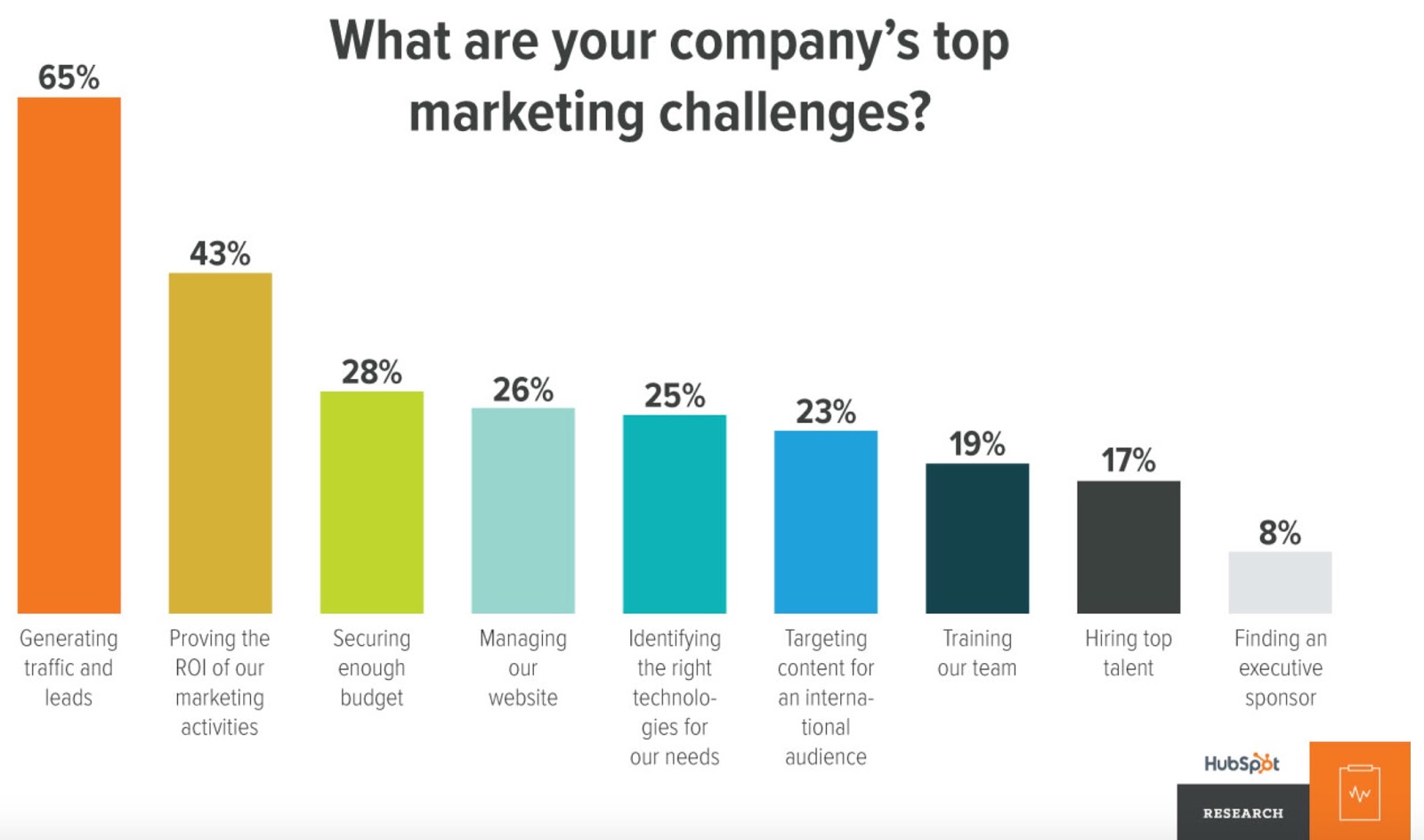
You can imagine that each channel comes with a unique set of difficulties.
This speaks to the importance of vetting your marketing plan before you set it in motion.
There’s too much at stake.
In this article, we’ll show you how you can evaluate your options and narrow down the best choice quickly.
You don’t need more than three days to get this done.
But first, we have a bit of wisdom to share.
Resist the urge to diversify
You know that voice in your head that says you need to be everywhere at once? That fear of missing out if you don’t at least try everything?
It’s a diversion. Resist it.
It is imperative that you focus on one marketing channel.
At least in the beginning.
You’ll shortchange your success if you spread yourself thin.
Here’s why:
- You’ll have less impact. If you’re focusing on several channels, you’re not doing everything you can to excel in any one of them.
- It will cost you more. Testing and thriving with a multichannel approach costs way more than you may be willing to spend. If you want an organic and cost-effective approach, stick to one channel.
- You’ll never actually know where your strength lies. Jumping from channel to channel means you won’t truly know the impact of one particular strategy on your business.
- You’ll remain at the heels of your competitors. That’s not where you want to be, is it? You want to be ahead, and the way to do that is to establish dominance in your market.
Now, don’t misunderstand us.
We’re not saying you should go all in on one channel and forget the rest.
But multichannel marketing is complex. Only 30% of marketers are confident they can deliver on such a strategy:

That’s not a lot.
What we’re advocating for is starting from a position of dominance.
Put your energy into one strategy until it succeeds. Then, piggyback on that success to achieve wins in other areas.
Does that make sense?
The steps in this article will be geared towards helping you place a bullseye on the ONE channel that will serve you best.
Now that we got that out of the way, let’s begin.
Step #1: Know your options
The first thing you want to do is brainstorm all your possible options.
This isn’t something you have to conjure up out of thin air.
You can connect with your target audience and spread your message in many different ways.
Better yet, each channel has several subsets that you can zone in on.
Here’s a good representation:
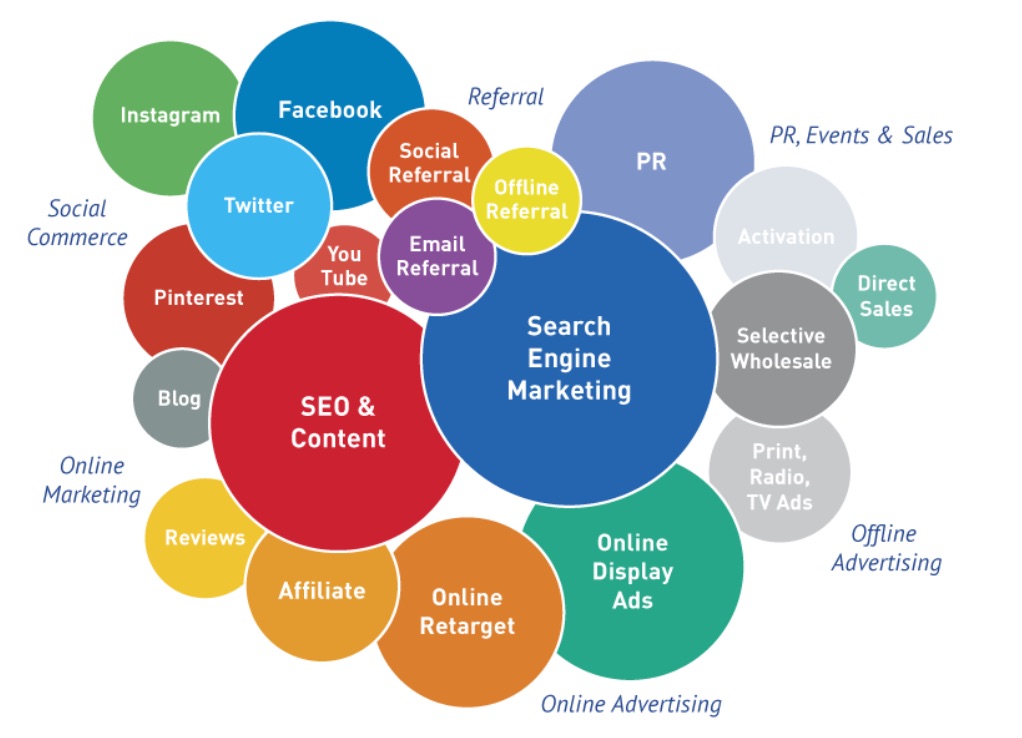
Many of these overlap. Some have even morphed into each other.
It can get confusing, quickly.
For example, some people consider SEO to be one marketing channel.
But we can’t imagine a world where SEO and content marketing aren’t intertwined. You can’t do one without the other.
The same goes for social media and paid advertising.
They’re different channels. But there’s a convergence.
Let’s imagine you decide to focus on Facebook as your primary social media platform. It would be unwise to not experiment with Facebook Ads.
Considering that Facebook has developed one of the greatest ad products out there, you’d be underutilizing the full power of the platform.
Marketers agree. Almost 57% plan to increase their social media ad spend.
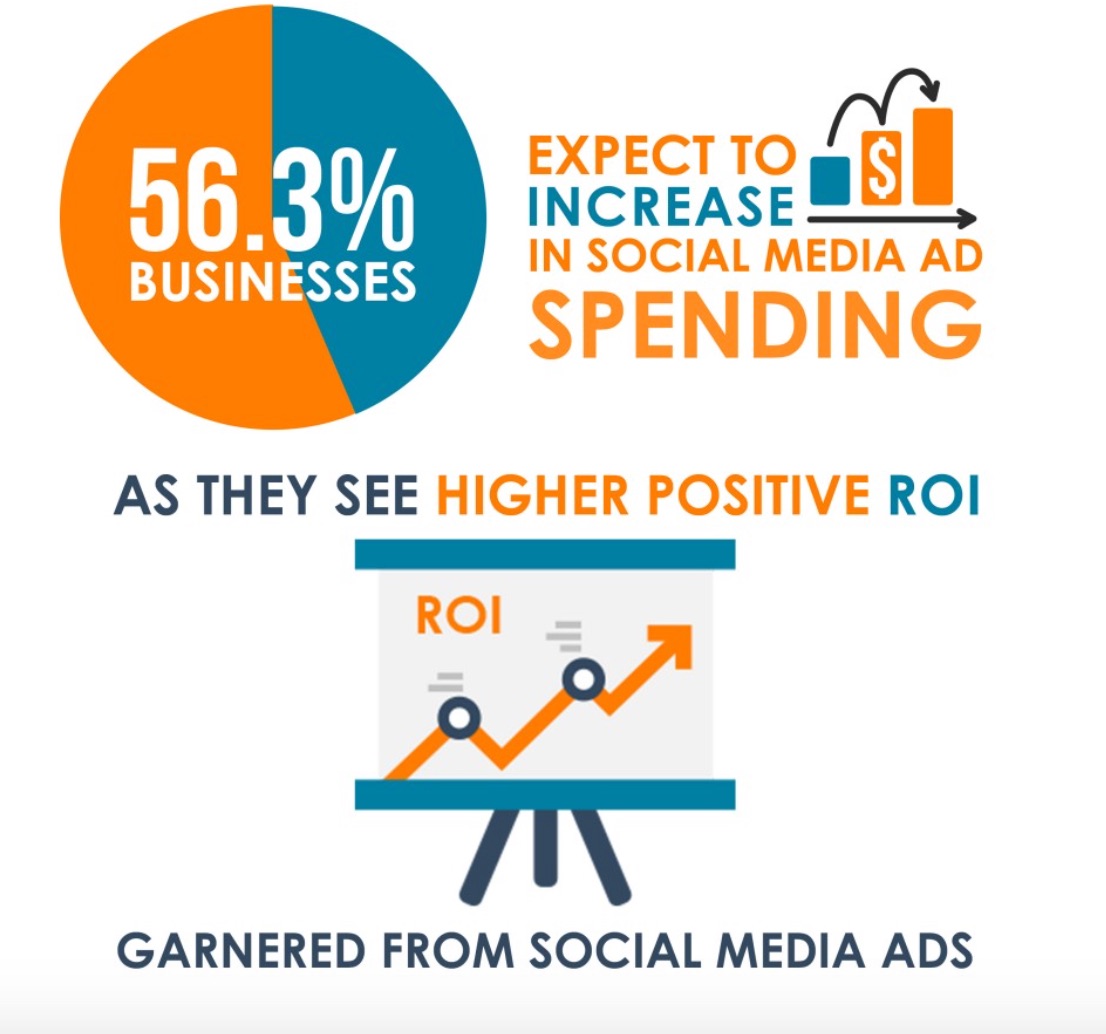
We say all this to make a simple point.
While you may zone in on one channel, you’ll see lots of overlap you shouldn’t ignore.
Go where your audience takes you.
Let’s look at some of your options.
Content marketing
This is about creating and promoting material relevant to your target audience.
Content marketing is central to your success.
It’s been reported 90% of businesses market using this channel.
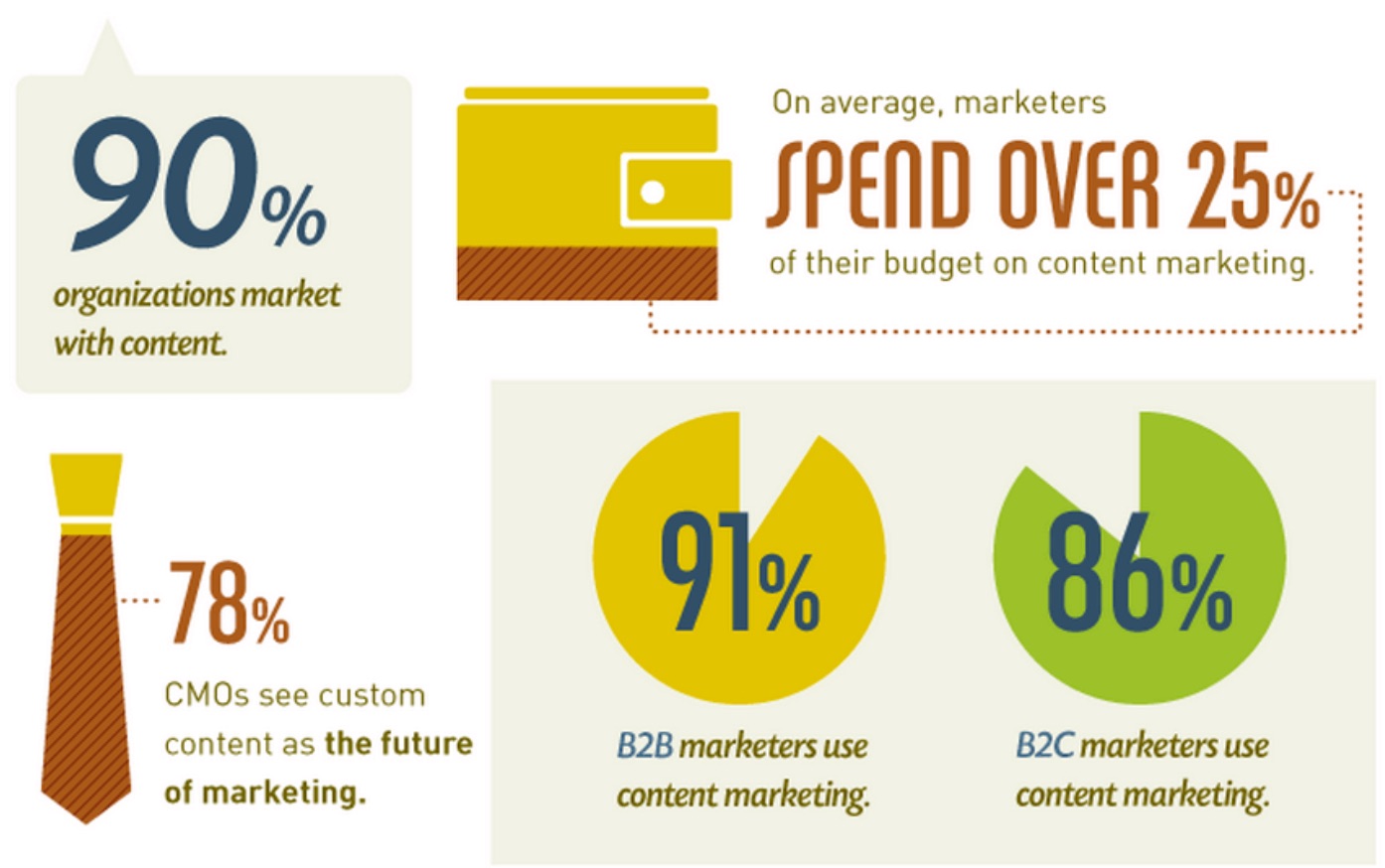
It means that no matter what strategy you use, content will be a part of it.
You can narrow your content down to blogging, guest blogging, podcasts, webinars, email, etc.
Social media marketing
You can use social media as your platform to get noticed, build authority, and grow a community.
You can also use it to drive traffic to your main site.
Or you can do both. It’s effective either way.
Paid advertising
Much of marketing is organic and will take time to generate results.
Paid advertising is one way to accelerate that.
The downside is, you have to pay to play.
Facebook ads, other social media ads, print ads, PPC, and direct response fall into this category.
Public relations
PR is about building relationships and capitalizing on the optics of your business.
It can be both online and offline. Press releases, conferences, events, interviews, and sponsorships are a few examples.
As you can see, you have no shortage of options when it comes to marketing.
We’ve given an overview of the main ones, but you are not limited to them.
Step #2: Choose the channels aligned with your business goals
You now have an idea of what’s available to you.
It’s time to make a list of all the channels that will serve your business.
Start with your business goals.
Some marketing channels are better suited to achieving a particular goal than others.
Goal setting is a flexible thing. You can make changes as your business evolves.
This means that the marketing channel you use right now may not be viable in the future, once your business progresses.
Consider what stage your business is in and what your goal for the next 90 days is.
According to Jay Abraham, there are only three ways to grow a business:
- Increase the number of customers
- Increase the frequency with which a customer buys from you
- Increase the amount that a customer spends on a purchase
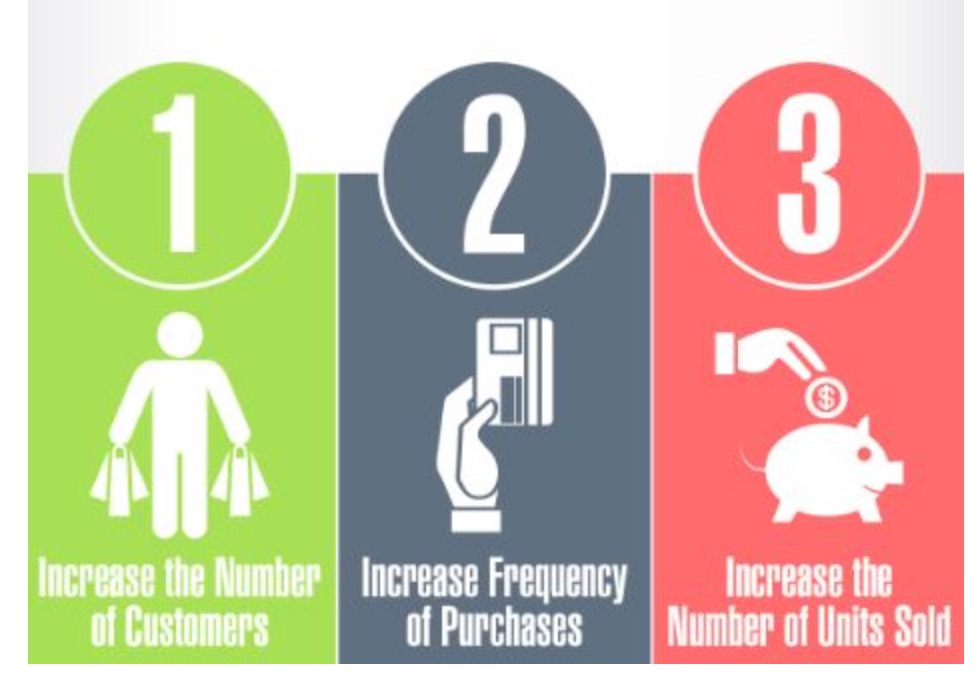
Your business goals should serve one of these three phases of business.
If you’re still at the first stage, your goals might be brand awareness, lead generation, and customer acquisition.
If you already have a list of buyers, your goal might be to increase sales.
What if you already have a reliable stream of sales?
There’s no such thing as too many sales, but your goal at this point might be to maximize profits and retain customers.
Here’s what most businesses are prioritizing:
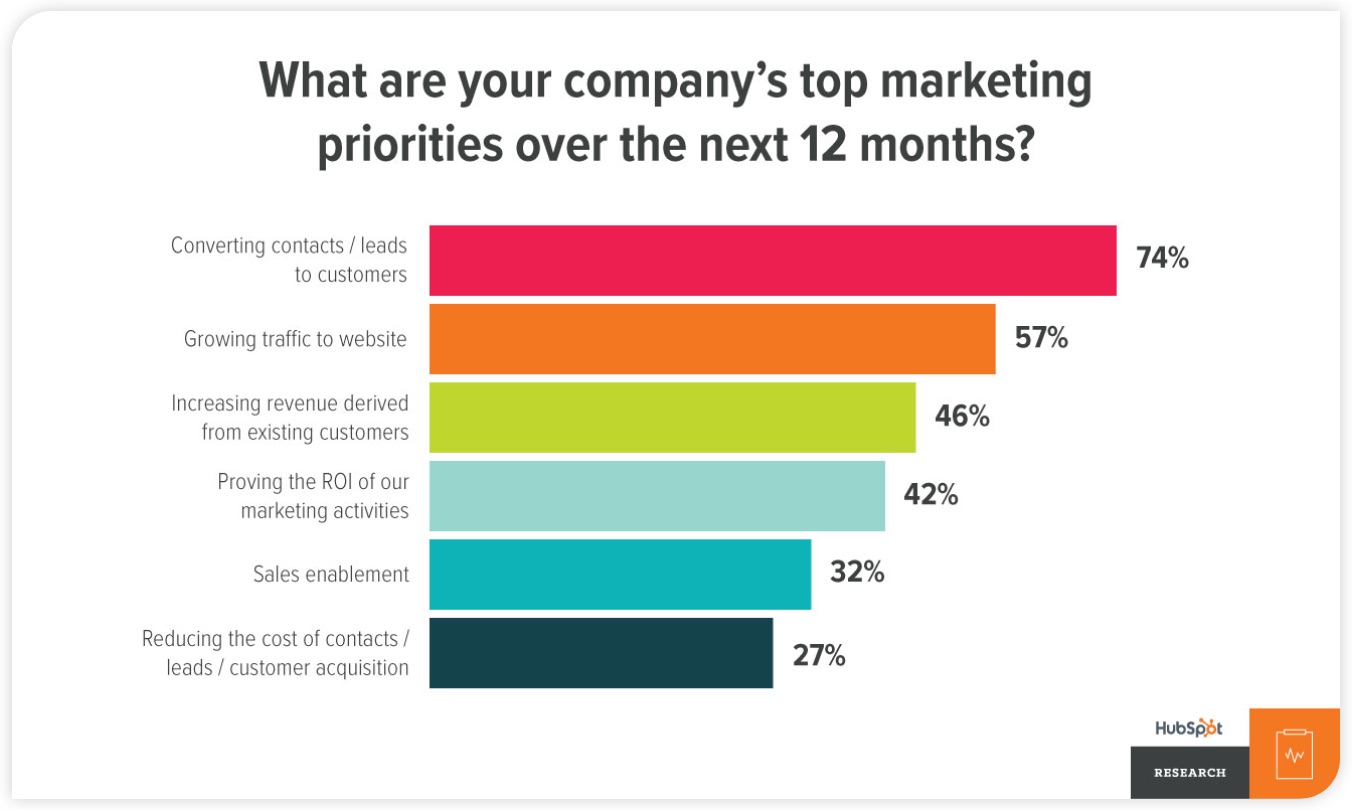
These may or may not apply to you. Just focus on what your business needs at the moment.
This way, you don’t set goals that aren’t yet attainable.
By extension, it ensures you don’t waste time and resources on a marketing channel that won’t serve your business well.
How do you select a channel that’s right for your business goals?
Before you even start testing, do some elimination.
We’ll give you a few examples, and you’ll have to apply this knowledge to your business.
Let’s say your goal is brand awareness.
PR, social media, content marketing, and even paid advertising can be used for this purpose.
The easy solution?
Eliminate the channels that would be less efficient.
For instance, paid advertising won’t be the most useful for brand awareness.
But for sales or lead generation? It can crush it! (If you know what you’re doing, that is).
Take a look at some of the business goals that apply to the content marketing channel. It will give you an idea of what to aim for:
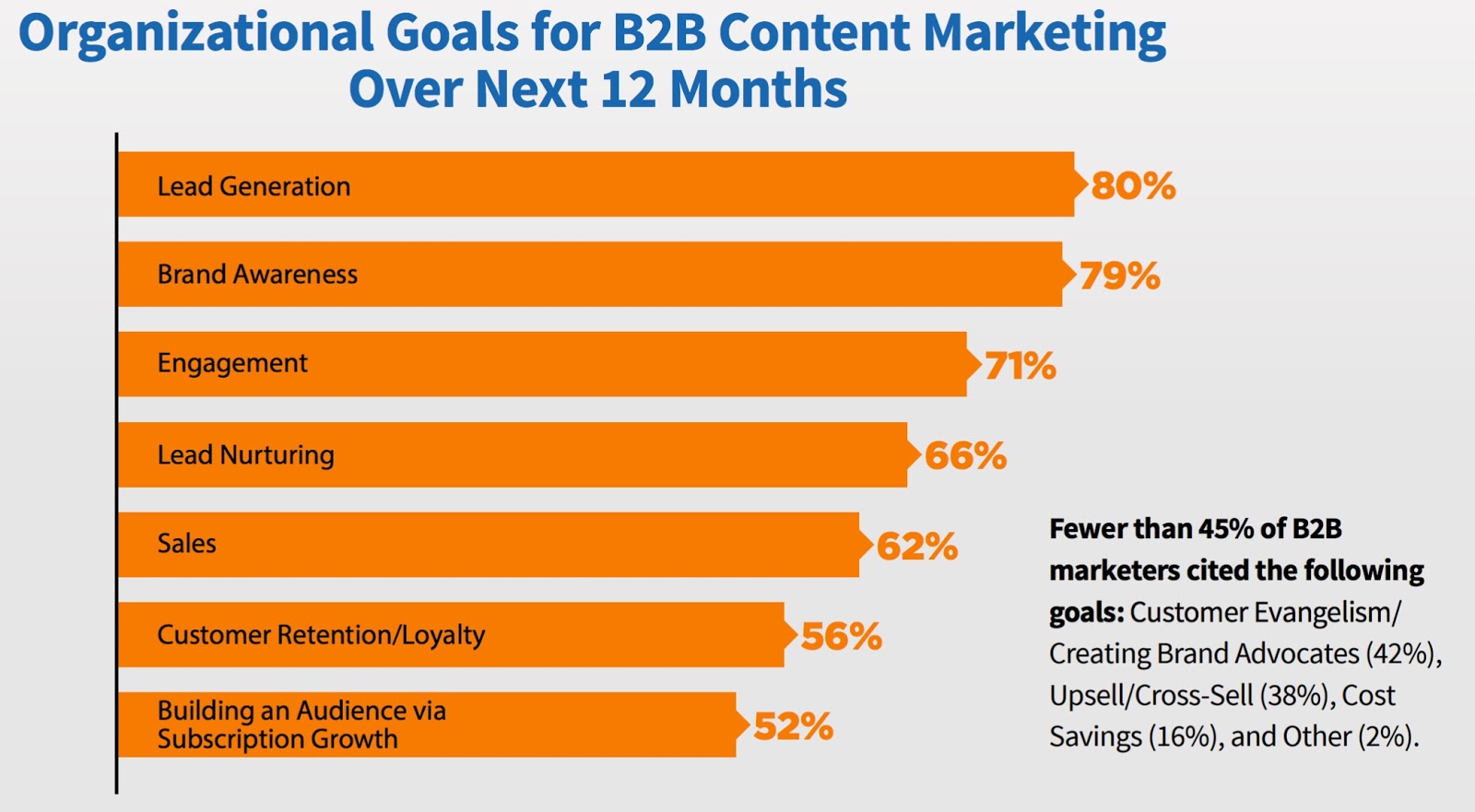
It’s also important to take into consideration what feels the most organic for your business.
If you’re selling something like hoverboards or bicycles, would blog posts serve you the best?
Not likely.
These products are lifestyle-based. You’d be better off using a visual channel that will allow you to provide an experience to potential customers.
Immediately, social media comes to mind.
Then you begin to narrow it down to Instagram or YouTube.
This is a logical process that won’t take you more than an hour to figure out.
You don’t have to find that one channel yet. Just eliminate what won’t work, and rank your remaining options.
Step #3: Narrow down the list by going where your audience is
At this point, you’ve got a few options. It’s time to prioritize.
This one is easy. Find your potential customers.
A marketing channel can serve your goal, but there are many platforms you can focus on.
If your customers are not hanging out there, you’ll be wasting your time.
Note:
The point of this article is not to find you a slam dunk marketing channel right away.
That would take testing and experimentation.
The goal here is to help you validate your chosen channel. This way, you know it’s viable before you start testing it.
Here’s our best advice for finding out where the attention is:
- SEO is a great place to start
- competitive research is a must
- you can’t go wrong with social media
Let’s look at each of these.
SEO
A majority of online interactions begin with a search engine (mostly Google).
The first step is to evaluate the SEO landscape by searching for keywords in your industry.
You’ll find out what your audience is searching for and how often.
This is not just essential for finding out what’s happening online. Let’s say there aren’t that many monthly searches for your keywords.
You may want to focus on an offline channel.
Or you may decide this is a gap you can take advantage of.
You won’t know until you do some basic keyword research.
A simple tool like the Google Keyword Planner will work.
Type in your keyword to get search volume data.
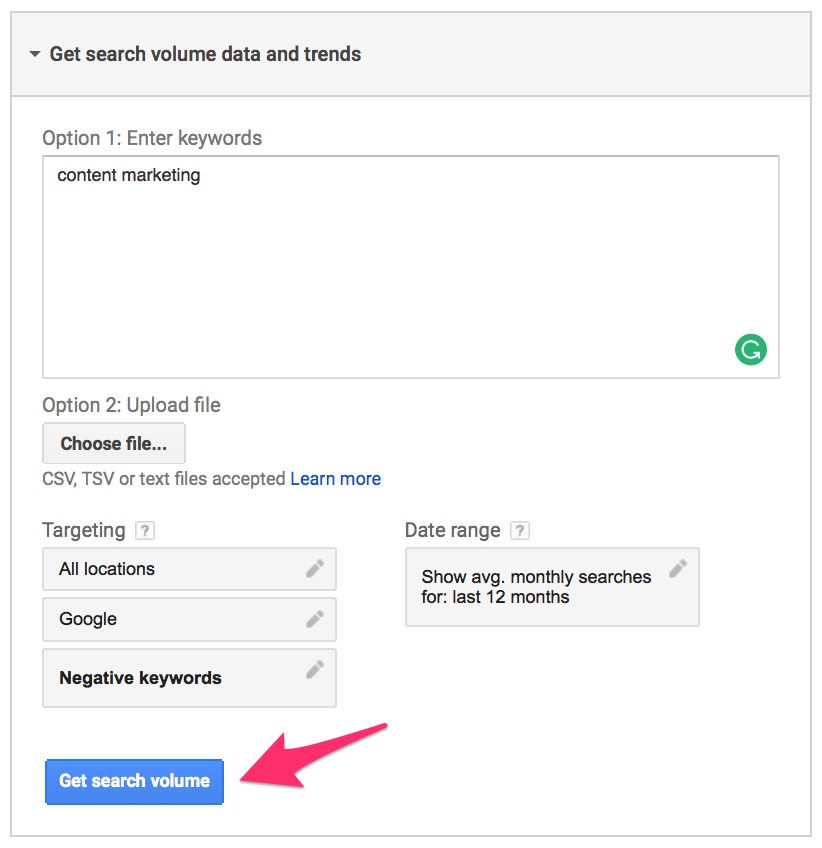
Competition research
If you want to know where your customers hang out, find your competitors.
First, identify the competitors.
A simple Google search will do the trick. The biggest players are those who rank on the first page of SERP.
Once you’ve got a solid list, use a tool like SimilarWeb for your research.
Enter your competitor’s website and press enter:

You’ll find a range of data. Pay attention to “Traffic source:”

For Quick Sprout, the highest traffic source is search.
Naturally, our primary marketing channel would be SEO and blogging.
Direct is a close second, but it’s a bit trickier to figure out.
It represents people who type in your URL directly. It doesn’t tell you where these people first came into contact with your business.
The next step is to check out the individual breakdown of each traffic source.
You can see where referrals are coming from:
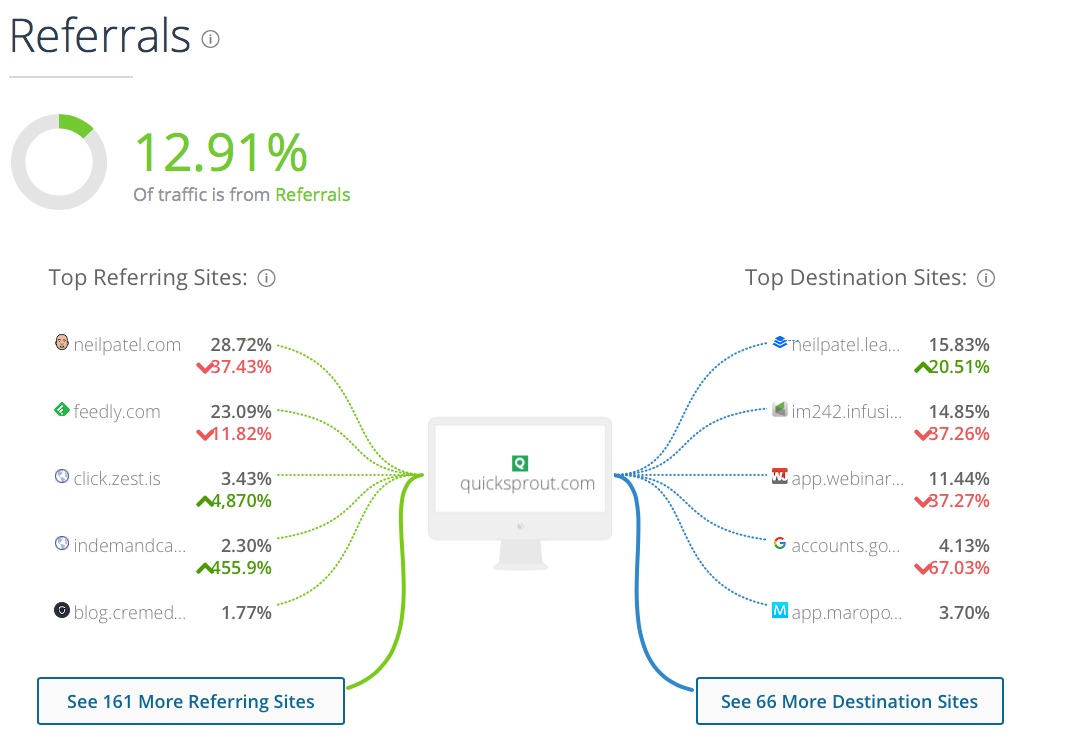
Since SEO is our dominant traffic source, we’ll pay particular attention to our top organic keywords:
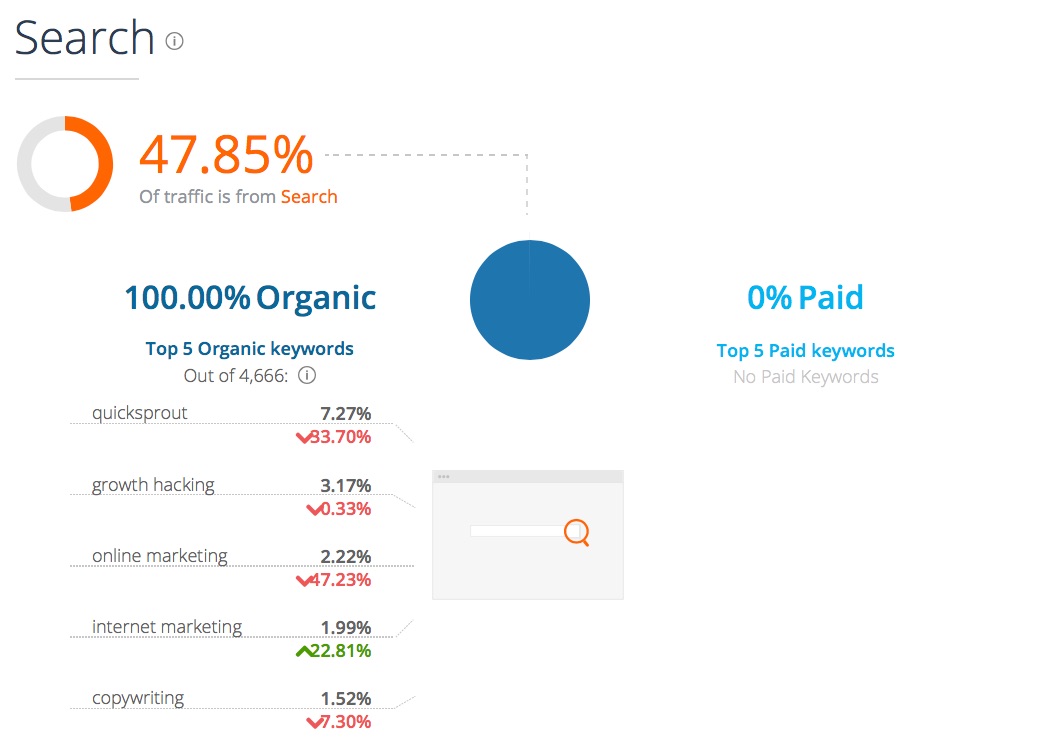
You can also see which social media platform is the most popular. Ours is Facebook.
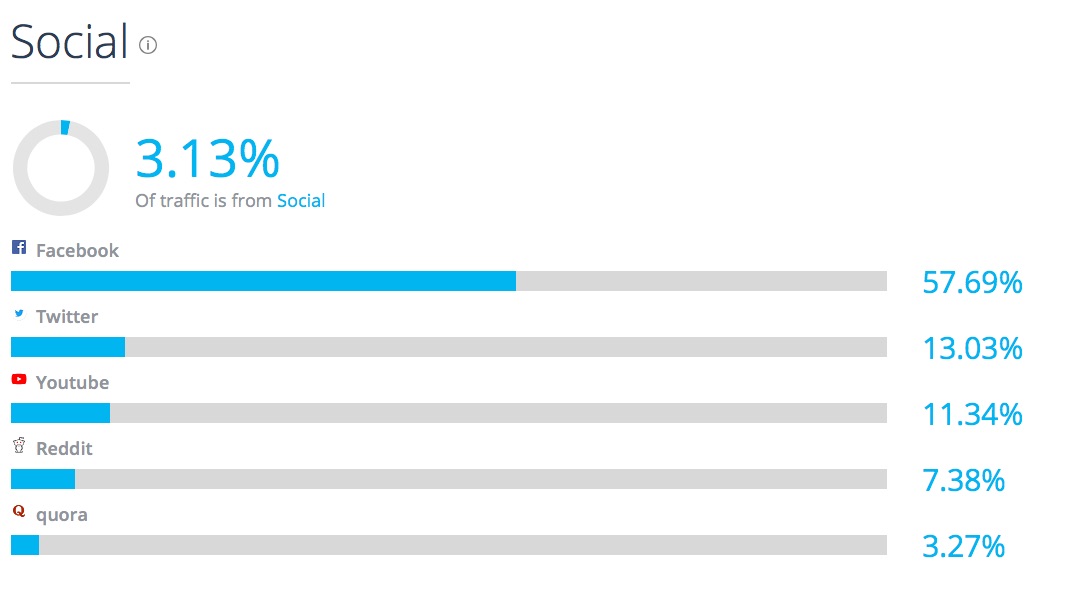
Social media
We like to take social media research a bit further.
The tool to use is BuzzSumo.
Type in your competitor’s domain. You can also search for a keyword:

You’ll see all the top performing content on the site and which social platform generated the most shares.
Using SimilarWeb, we saw that Facebook was Quick Sprout’s top platform.
BuzzSumo tells the same story:

If you want to take this a bit further, you can go to these individual platforms and do some sleuthing.
Check out the groups with the most members, listen in on the conversations, and get a feel for what your audience is focusing on.
When you go through this process, you may find you have two or three reliable options.
Which do you select?
We have three criteria.
Cheap. Fast. Easy.
You want to pick a channel that won’t cost you too much, if anything, to get started.
You also want a channel that doesn’t have a steep learning curve. Otherwise, you may spend too much time and money trying to figure it out.
Lastly, pick the channel that will allow you to make the most headway, quickly.
You must pick one, so use these criteria as the final litmus test.
Conclusion
Selecting a new marketing channel is a tall order.
It’s important you take some time to validate a potential channel before you focus on it.
Marketing requires time, which can easily be wasted on ineffective strategies.
It also requires cash.
It means you’d want to see a solid return on both your time and money investment.
The surest way to secure an attractive ROI is to vet potential marketing channels first.
You can then test and double down on what’s working.
Most people don’t go through this process of validation and testing.
As long as you keep experimenting and tweaking your strategy based on your results, you’ll have a significant advantage over your competitors.
